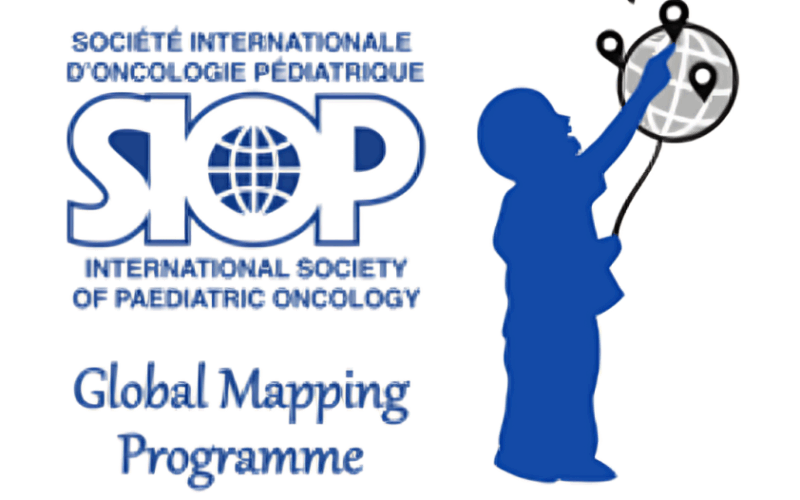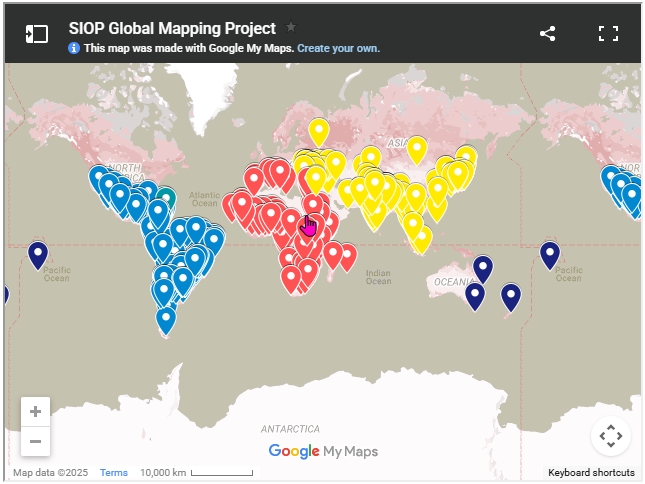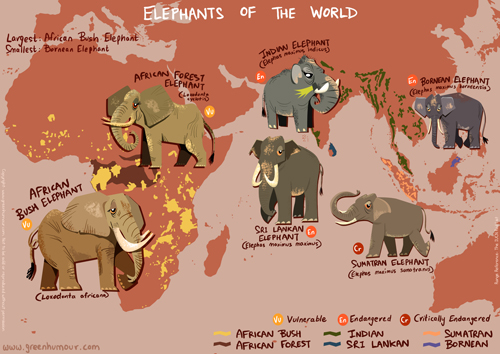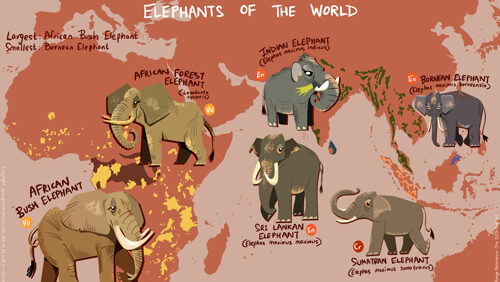What do elephants have to do with the SIOP Global Mapping Programme?

I have been involved with the International Society of Paediatric Oncology (SIOP) Global Mapping Programme (GMP) since its inception. I am a parent of a survivor of childhood leukaemia and have been a patient advocate for a long time.
Maite Gorostegui is Chair of GMP and has held that role since 2023. Maite is a paediatric oncologist from Chile currently working in Barcelona.
In this short article not only are we are going to answer the question of what do elephants have to do with the SIOP Global Mapping Programme (GMP), but also provide some history on the GMP, the current situation, the exciting future, and most importantly how it is helping clinicians, and children with cancer and their families.
You may have heard the joke, “how do you eat an elephant?” and the punchline is “one mouthful at a time”. This is similar to our approach. How do you map every institution in the world that treats children with cancer? The answer is one country at a time, and currently we are close to 100 countries.
It began in Africa and in a significant year
In 2018 under the leadership of the then SIOP President Eric Bouffet, and the passion of Professor Jennifer Geel, the support of Neil Ranasinghe and experience of Dr Julia Challinor, we started mapping every institution treating children with cancer in Africa. It was far harder than we imagined, and we learnt a lot from this experience, which has shaped how we collect data, and the data we are collecting. As you may know, 2018 is the year when the World Health united with the oncology community to address inequality (#CloseTheGap) and increase the survival rate of all children with cancer to at least 60% by 2030 for six index childhood cancers. This is the WHO Global Initiative for Childhood Cancer (GICC). The GMP supports this urgent need.
Even faster than Speedy Gonzales (and the elephant): Latin America as a collaboration model
Phase 2 was Latin America. By this time we realised were asking too many questions. It was also too time consuming for many people to answer the survey, so response rates were low. We distilled the survey down to less than 20 core question and with face-to-face follow up work, we got Latin America mapped.
Asia
We are currently mapping Asia; 40 countries are on the map. Many other institutions are in the process of providing data, and we are working hard on collecting data from both small countries and countries with very big populations. Mapping a continent like Asia takes a lot of time, emails, and following up leads. Maite has been contacting hospitals, national societies, contacts, friends, and friends of friends to get the correct people to complete the survey. In association with SIOP Asia and Resonance team members (where the data is stored), the Pediatric Haematology Oncology chapter of the India Academy of Pediatrics (PHO) have mapped much of India. We have made a start in China and Russia.
Oceania: going in deep
The survey has already been distributed and includes a few additional questions important for children’s cancer care in the region. This is now part of a doctoral thesis; the elephant is growing up. In case you didn’t know, elephants take a long time to grow up and then live a long time. A bit like the GMP.
What do we want to know?
We want to know everything about the institutions treating children with cancer. However we know that answering many questions about the facilities, staff, treatment is very time consuming, and staff don’t have the time for answering many questions. As a result we are focussing on the following questions:
- What is your position in your organisation
- In your hospital how is most childhood cancer care funded?
- Estimated number of patients treated per year at your hospital or peadiatric cancer unit/ward?
- What clinical services are available at your hospital?
- Pharmacist
- Play therapist
- Parent support group
- Palliative care team
- Social worker
- Psychologist
- Bereavement counsellor
- Physical therapist
- How many inpatient beds does your hospital have for paediatric oncology patients?
- Does your hospital have access to chemotherapy to treat the majority of cancers that you manage?
- How many nurses care for children with cancer the majority (>75%) of their time at your hospital or paediatric oncology unit/ward?
- How many nurses care for children with cancer the majority (>75%) of their time at your hospital or paediatric oncology unit/ward?
- Do children with cancer have access to radiotherapy services?
- Do children with cancer have access to paediatric surgery services?
Other regional organisations are asking additional questions but as a minimum we are ensuring everyone, everywhere is being asked the questions above.
The elephant in the room – what’s the point?
Why are we spending so much time and effort on this? These are good questions and I regularly ask myself this. Many papers have been published using data from Africa and Latin America. These papers have confirmed a lot of what we suspected, but other interesting facts have come to life in Latin America:
- Not enough paediatric oncologists and nurses for the need in low- and middle-income countries – I think many of us suspected this
- In Latin America, 77% of children are treated in public hospitals, 66% are centres of excellence (national referral centres treating more than 100 new patients per year) – this is invaluable in helping us decide where to focus our efforts regarding education, research, and advocacy
The data show Latin America has a long tradition of organized children’s cancer care in some countries, whilst in other ones we are seeing the impact of the WHO GICC in the region with the promulgation of cancer laws and the start of national cancer programming that includes childhood cancer.
Published papers are an essential stepping stone, but in itself they aren’t enough. Many organisations are interested in the data now – national societies, governments, regional organisations, WHO GICC, and PAHO. The recent SLAOP Congress in Colombia was very exciting. I didn’t attend but was getting almost hourly updates from Maite about people or organisations that were interested in GMP or wanted to collaborate.
99 red balloons
As of last month we have mapped 99 countries and over 600 institutions. Data is held on the secure Resonance site. The map of institutions is regularly updated. We are joining efforts with other institutions and stakeholders interested in mapping initiatives, trying to avoid duplication, learning from each other, and contributing as one force to the children’s cancer community. Just five years to 2030, we do not have time to lose, nor the children with cancer we serve.

This map is of use to parents/caregivers of children with cancer when looking for their nearest hospital, and also this map helps collaboration. Is your institution on the map? If it isn’t and it should be, please get in touch.
Want to know more?
More information about the programme is on the SIOP website here.
SIOP Congress Amsterdam 2025
We will also be at the SIOP Annual Congress in Amsterdam in October 2025. Look out for us and other people presenting GMP data and posters.
Thank you
First and foremost a massive thank you to everyone that has completed the survey.
This programme wouldn’t have been possible without the continued support of the SIOP Presidents – Eric Bouffet, Kathy Pritchard Jones, Guillermo Chantada.
The SIOP Continental Branch Presidents have provided invaluable help.
Foundation S has provided invaluable funding to pay for both data collection and input.
Resonance Health for providing a secure location for hosting the data, producing and maintaining the map. and with many hours of support from Jennifer Lowe.
Prof Julia Challinor for doing so much on this programme and reviewing this article. You can rely on Julia for improving everything.
SIOP and elephants
Please note that the International Society of Paediatric Oncology (SIOP) is all about improving the care for children, adolescents, and young adults with cancer. It is not about eating elephants.

Image is taken from greenhumour.com
Written by Neil Ranasinghe and Maite Gorostegui
You can find more posts on OncoDaily.
